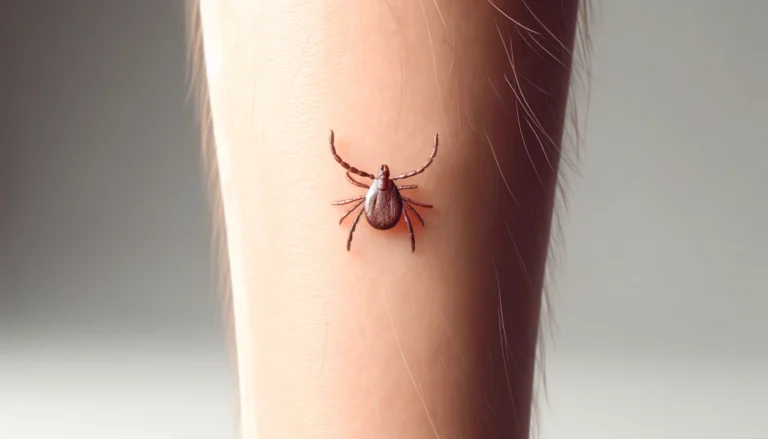
Written by Dr. Diane Mueller
The blacklegged tick, is notorious for carrying Lyme disease are most active from April through October, making them a year-round headache for folks in tick-prone areas, especially in the northeastern, upper Midwest, and northwestern United States.

Not every tick carries Lyme, but since you can’t tell just by looking, it’s best to steer clear of tick bites altogether. Lyme disease isn’t just a U.S. problem either; it’s been reported in Europe and Asia too. While most tick bites are harmless, a select few can trigger some pretty nasty diseases, making them a global health concern.
Diagnosing Lyme disease typically involves a two-step process: first, a screening test for Lyme antibodies, then a Western Blot test if the first one comes back positive. Both tests need to be positive to confirm Lyme disease.
If a tick bites you, carefully remove it without twisting. Clean the area with soap and water and get rid of the tick properly. Keep an eye out for any symptoms.
Lyme disease symptoms can range from early signs like a bullseye rash, fever, and fatigue to more severe later-stage symptoms that show the bacteria has spread.
The best way to avoid Lyme disease is to use repellents with DEET or permethrin, wear protective clothing, and regularly check for ticks, especially after being outdoors.
If Lyme infection is confirmed, treatment usually involves taking oral antibiotics for 10-14 days. But don’t wait – the sooner you catch it, the better your chances of getting better.
For starters – a positive Lyme Disease test doesn’t always mean an infection. On the flip side, a negative result might give false reassurance, ignoring the fact that another tick could have given you Lyme disease. Don’t wait for test results to start treatment, especially if you have symptoms – you might even get them before the results come back. Typically a 10 to 14-day course of oral antibiotics is prescribed.
Lyme disease testing usually involves a two-step process. First, a blood sample is screened for Lyme disease antibodies. But heads up – the test might react to antibodies fighting other conditions. That’s why a positive first test is followed by a second test called the Western Blot. To confirm Lyme disease, both tests need to come back positive. Since your body needs time to make antibodies, early Lyme disease testing might be negative even if you’re infected. If symptoms stick around, get tested again.
Here’s how to remove ticks the right way: pull straight up with fine-tipped tweezers. Don’t twist the tick or you might leave part of it stuck in your skin. Wash your hands and the bite with soap and water to avoid infections. Flush the tick, drown it in alcohol, or stick it to tape so it can’t bite again. Remember, preventing bites is always better than dealing with tick-borne diseases, which are a global health concern.
Lyme disease timeline symptoms come in stages. The timing, occurrence, and severity can vary from person to person. Let’s break it down.
In the early localized stage of Lyme disease, 70%-80% of infected people get a bullseye rash a few days to weeks after the tick bite. You might also have fever, fatigue, headache, and achy muscles and joints. Catching it early is key because prompt treatment is more likely to work.
When Lyme disease reaches the later disseminated stage, things get more serious and widespread. Weeks, months, or even years after a tick bite, you might get severe headaches, a stiff neck, multiple rashes, arthritis, facial palsy, an irregular heartbeat, dizziness, shortness of breath, inflammation of the spinal cord, or nerve pain. These symptoms mean the bacterial infection has spread throughout your body.
In kids, Lyme disease can cause unexplained mood swings, anger, depression, or nightmares, on top of physical symptoms. Keep an eye out, since kids might not be able to explain how they feel or if their emotions change. If your kid is acting weird, get medical advice – it could be a sign of Lyme disease or other conditions.
If a tick bites you, act fast to lower your risk of Lyme disease and watch for symptoms so you know when to see a doctor. Here are some things to consider after a potential tick-borne infection.
Don’t burn the tick, use Vaseline, or grab it with your bare hands. Use tweezers to grip the tick as close to your skin as possible and gently but firmly pull straight out. If you don’t have tweezers, use a tissue or cloth to avoid touching the tick directly.
Next, get rid of the tick the right way: put it in soapy water or alcohol, stick it to tape, or flush it. Then, watch for symptoms like a small red bump that looks like a mosquito bite or a bullseye rash. Just because a tick bit you doesn’t mean you’ll get Lyme disease.
After coming inside, wash any treated skin and clothes that were exposed to tick habitats. Use permethrin repellents on clothes, focusing on pants, socks, and shoes. This extra layer of protection helps kill ticks on contact, lowering the risk of tick attachment and Lyme disease transmission.
If you find a tick bite or have symptoms like a weird rash or fever, see a doctor. The sooner Lyme disease is caught, the better your chances of fully recovering.
We have helped thousands of people restore their health and quality of life by diagnosing and treating their Lyme Disease
Testing the tick itself or your body for Lyme disease can give helpful info about potential tick-borne diseases. But standard Lyme disease tests aren’t perfect, so be sure to work with a Lyme Literate doctor to ensure proper testing.
If you have Lyme disease, treatment usually means taking oral antibiotics for 10 to 14 days to get rid of the infection. But your treatment depends on how far along the infection is, and it works best in the early stages.
Lyme disease can be tricky, but you can lower your risk with smart prevention strategies. It’s all about being proactive, and here are some tips to keep in mind.
Using repellents correctly is a big part of preventing tick bites. Products with DEET can repel ticks, but they don’t kill them, and they’re not 100% effective. For something stronger, use products with permethrin, which you should only put on clothes, to destroy ticks on contact. Always follow the label directions, spray repellents outdoors, and wash them off when you come inside.
Another alternative for your yard is to grow plants that keep ticks away in your garden – such as garlic, lavender, and more.
What you wear can also help keep ticks away. Light-colored clothes make it easier to spot ticks. Cover as much skin as you can with long sleeves, long pants, and by tucking your pants into your socks to stop crawling ticks. You can also spray outdoor clothes, shoes, tents, and camping gear with a repellent containing 0.5% permethrin for extra protection. Remember, preventing a tick bite is better than dealing with the problems it can cause later.
Make tick checks a part of your routine. Shower and carefully check your skin after being outdoors. Ticks usually crawl around for a few hours before attaching. Check your kids and pets too – they can also get tick bites. By taking these steps, you can lower your risk of getting Lyme disease from a tick bite. Stay smart and stay safe.
When checking for ticks, look over your whole body, paying extra attention to hard-to-reach areas and warm, moist spots where ticks like to hide. This includes behind your ears, the back of your neck, your groin, and under your arms. If your pets go outside, check them regularly too.
This article gives tips on avoiding Lyme disease, which is spread by blacklegged ticks. It stresses the importance of preventing bites by using tick repellent, wearing protective clothes, and regularly checking for ticks instead of just relying on tick tests. The article advises watching for symptoms, especially in kids, and getting treatment right away. It also emphasizes being extra careful in areas where Lyme disease is common to stay healthy.
References:
Hayes, E., & Piesman, J. (2003). How can we prevent Lyme disease?. The New England journal of medicine, 348 24, 2424-30
[i] Stephanie Richards, Ricky Langley, Charles Apperson, and Elizabeth Watson, “Do Tick Attachment Times Vary between Different Tick-Pathogen Systems?,” Environments no. 2 (September 2017): 37, doi:10.3390/ environments4020037.
Ebel GD, Kramer LD. Short report: duration of tick attachment required for transmission of powassan virus by deer ticks. Am J Trop Med Hyg. 2004;71(3):268-271.
Chien-Ming Shih and Andrew Spielman. “Accelerated Transmission of Lyme Disease Spirochetes by Partially Fed Vector Ticks,” Journal of Clinical Microbiology 31, no. 11 (November 1993): 2878–81.
We have helped thousands of
people restore their health
and quality of life by diagnosing
and treating their Lyme Disease.
“Dr. Mueller’s approach to medicine is refreshing! There is only so much you can do with western medicine and in my life I was needing a new approach. By addressing the whole body, nutritional diet factors, environmental factors, blood work, and incorporating ideas I had not previously known, I was able to break through with my conditions. I am not only experiencing less pain in my life, but through the process of healing guided by Dr. Diane Mueller, I am now happy to say I have more consciousness surrounding how I eat, what to eat and when things are appropriate. Living by example Dr. Mueller has a vibrancy that makes you want to learn and know more about your body and overall health. I highly recommend her to anyone looking for new answers, a new approach to health, or in need of freedom from pain and limitations.”
-Storie S.
Kihei, HI
